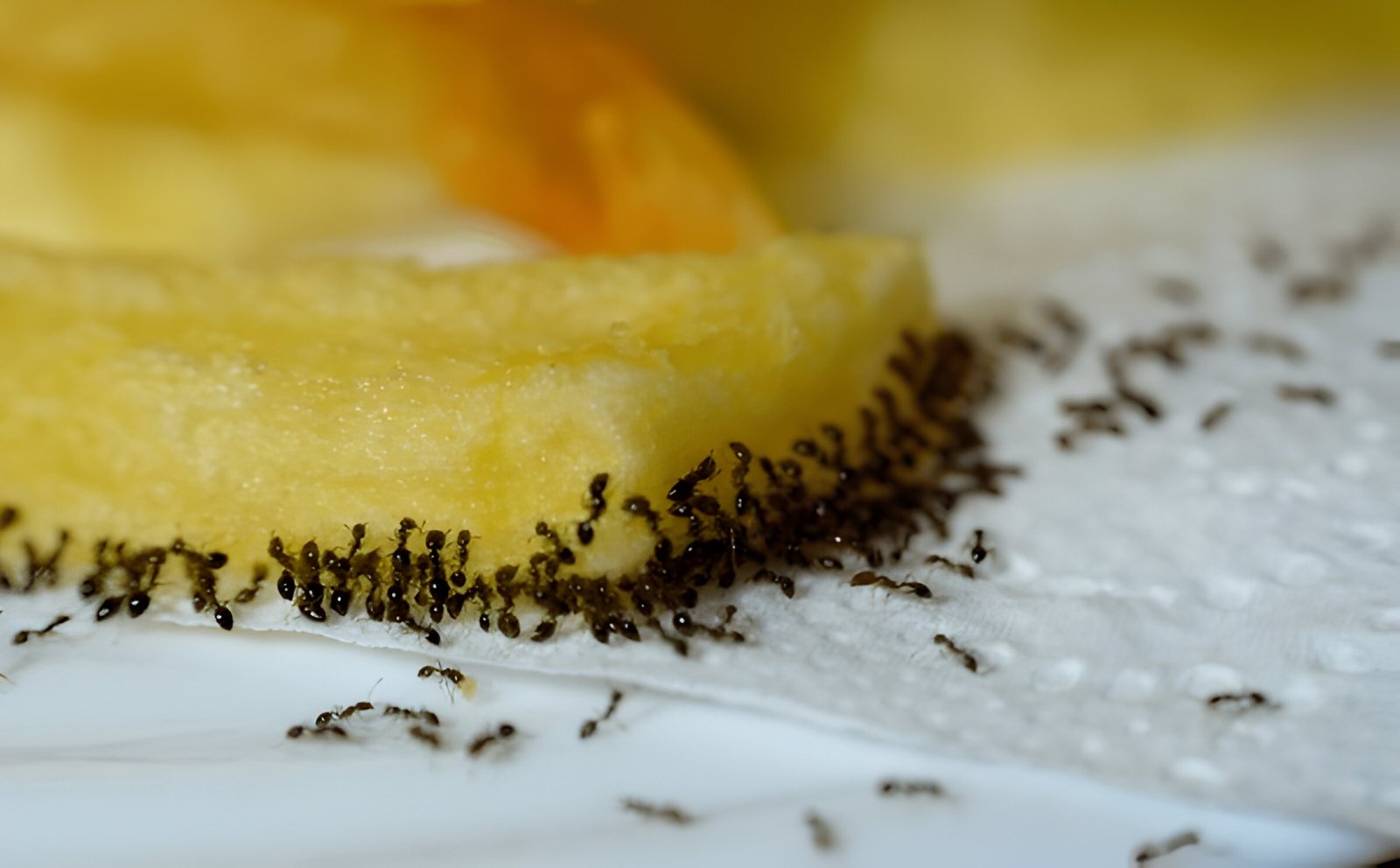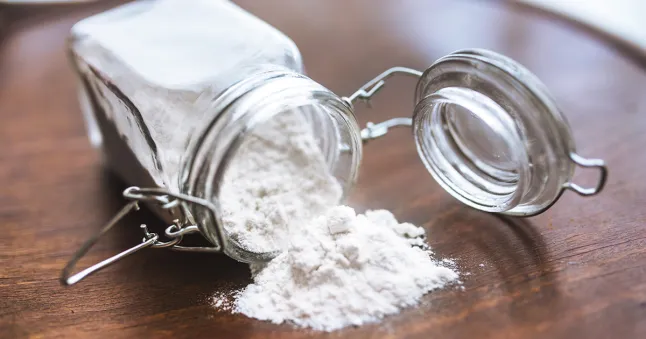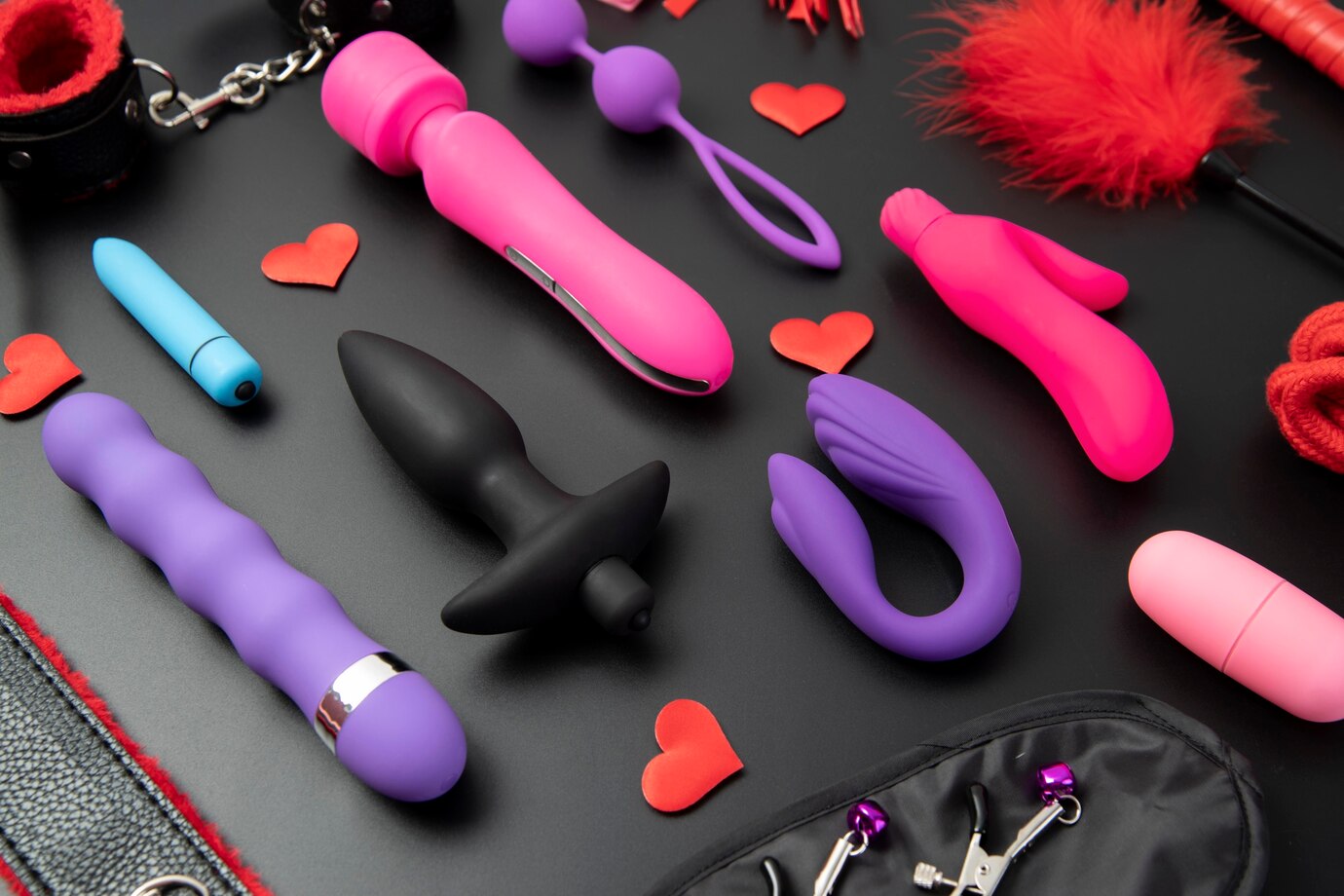
Image Credit : Shutter stock
Discovering little black bugs in your home can be unsettling and frustrating. These tiny invaders often go unnoticed until their population grows, causing concern for homeowners. From ants to beetles, various species of small dark insects can find their way indoors, seeking food, shelter, or warmth. Identifying and eliminating these pests has an impact on maintaining a clean and comfortable living environment.
Understanding the types of little black bugs that commonly infest houses is the first step to address the problem effectively. This article aims to provide insight into the characteristics of these insects, explore natural methods to get rid of them, and offer guidance on when to seek professional help. By following the advice presented here, readers will be better equipped to tackle bug infestations and keep their homes pest-free.
Common Types of Little Black Bugs in Houses
Carpet Beetles
Carpet beetles are small, oval-shaped insects that measure 1/16 to 1/8 inches long. They come in various colors, including black, brown, or mottled patterns. These pests have the ability to digest keratin, a protein found in animal-based materials. Adult carpet beetles typically feed on flowers and plants outdoors but can enter homes through open windows or on cut flowers. Once inside, they lay eggs in fibrous materials, which become food sources for their larvae.
Carpet beetle larvae, often described as fuzzy little worms with brown bands, can cause significant damage to carpets, clothing, and upholstered furniture. They feed on materials containing keratin, such as wool, fur, silk, and leather. Signs of infestation include bald patches or fraying in carpets and rugs, as well as holes in clothing items.
Ants
Ants are among the most common little black bugs found in houses. They have distinct features, including slim bodies, tight waists, and a pair of antennae. Most ants are black, although some species can be red or brown. These insects typically measure between 0.75 and 20 mm in length.
Ants often enter homes in search of food, especially items high in sugar content. They travel in colonies and leave pheromone trails for other ants to follow. This behavior results in lines of ants moving through the house. While small ants are usually after food, larger black ants may be carpenter ants, which can cause structural damage to wooden elements in homes.
Fleas
Fleas are tiny, wingless insects that primarily feed on the blood of animals. They can find their way into bedrooms by hitching a ride on pets. These pests are known for their ability to jump and can cause discomfort to both humans and animals.
To address a flea infestation, it has an impact on washing all bedding, linens, and clothes in hot water and drying them on the highest heat setting. Thoroughly vacuuming the entire bedroom, focusing on the bed area, under furniture, and carpeting, can also help eliminate fleas and their eggs.
Mites
Mites are extremely small, round bugs with eight legs and no wings. They can appear black from a distance but are often brown or red when observed closely. Clover mites, a common type, leave behind small red marks when crushed.
These tiny creatures are drawn to warmth and sunlight, which is why they are sometimes found on windowsills. While mites rarely cause harm to humans beyond mild skin irritation or allergies, their presence may indicate elevated moisture levels or water issues in the home.
Booklice
Booklice, also known as psocids or barkflies, are small, soft-bodied insects that thrive in environments with high humidity. Despite their name, they are not true lice and do not feed on blood. Instead, booklice are attracted to mold, fungi, and starchy materials found in books and wallpaper.
These pests are often found in areas with excess moisture, such as windowsills, bookshelves, or near indoor plants. To control booklice infestations, it has an impact on reducing humidity levels in the home by using dehumidifiers, improving ventilation, and fixing any leaks.
Identifying Characteristics of Little Black Bugs
Size and Shape
Little black bugs in houses vary in size and shape. Carpet beetles measure just 1/16 to 1/8 inches long, about the size of a pinhead. They have round or oval bodies, similar to ladybugs. Ants, another common household pest, have three distinct body sections: head, midsection, and rear. Mites are extremely tiny and round, while booklice are small and soft-bodied.
Color and Markings
While many of these bugs appear black from a distance, closer inspection often reveals different colors and patterns. Carpet beetles can be black, brown, or mottled with spots on a lighter background. Some species have a shiny appearance. Ants are typically dark brown to black. Mites, though often perceived as black, may be brown or red when observed closely. Booklice are usually translucent or light brown.
Movement Patterns
Observing how these bugs move has an impact on identifying them. Ants travel in lines, following pheromone trails. Carpet beetles move slowly and may appear to be fuzzy or hairy. Booklice have a rather jerky or erratic walking behavior, often moving in a zig-zag pattern rather than a straight line. Gnats, if present, are small black bugs with wings that fly around windows or potted plants.
Location in Home
The location where these bugs are found can provide clues to their identity. Carpet beetles are often discovered in carpets, clothing, or upholstered furniture. Ants typically enter homes in search of food, especially items high in sugar content. Booklice are frequently found near books, wallpaper, or areas with high humidity. Mites may be spotted on windowsills or near indoor plants. Gnats are commonly seen flying around windows or potted plants.
Natural Methods to Eliminate Little Black Bugs
Deep Cleaning and Vacuuming
Regular deep cleaning and vacuuming have an impact on eliminating little black bugs from homes. These pests often thrive in areas with accumulated dirt, dust, and food debris. To combat this, homeowners should vacuum floors, rugs, and furniture frequently, using a high-quality vacuum cleaner with a HEPA filter to trap the tiniest particles. This process removes food sources for pests such as ants, cockroaches, and flies.
Sweeping and mopping also help eliminate crumbs, spills, and debris that can attract pests. Special attention should be paid to high-risk zones like kitchens, dining areas, and bathrooms. Vacuuming not only removes pests but also their droppings, shed skins, webs, and egg cases, making it easier to monitor ongoing infestations.
Using Diatomaceous Earth
Diatomaceous earth (DE) has an impact on killing almost any insect with an exoskeleton, including ants, bed bugs, cockroaches, and fleas. Food-grade DE is non-toxic to humans and animals, making it a safe option for use in homes with children and pets.
To apply DE, homeowners can sprinkle it in areas where pests are frequently seen, such as under appliances, on windowsills, or along baseboards. For carpets and rugs, a fine flour sifter or duster can be used to evenly apply the powder. DE can also be mixed with water and applied as a spray, allowing for even distribution in hard-to-reach areas.
Essential Oil Sprays
Essential oils have an impact on repelling various little black bugs naturally. A homemade bug spray can be created using a combination of essential oils such as citronella, tea tree, lemongrass, rosemary, spearmint, and lavender. To make the spray, mix 2 ounces of witch hazel with 40-50 drops of essential oils in a 4-ounce amber glass spray bottle, then top it off with water.
Different essential oils target specific pests:
- For ants: Spearmint, peppermint, and lemon oils
- For flies: Rosemary, peppermint, eucalyptus, and basil oils
- For mosquitoes: Peppermint, citronella, lemongrass, and tea tree oils
Dehumidifying Your Home
Reducing humidity has an impact on creating an environment less hospitable to little black bugs. Many pests thrive in damp conditions, so using a dehumidifier can help deter them. While a dehumidifier alone may not eliminate existing infestations, it can make the home less appealing to moisture-loving insects like cockroaches and silverfish.
To effectively use a dehumidifier for pest control:
- Maintain humidity levels below 50%
- Run the dehumidifier continuously
- Fix water leaks and improve ventilation
- Regularly check humidity levels and adjust run times
By combining these natural methods, homeowners can effectively combat little black bugs without resorting to harsh chemicals.
When to Call a Professional Exterminator
Signs of Severe Infestation
Homeowners should be vigilant for signs of severe pest infestations. These include visible droppings, especially in hard-to-reach areas like cabinets, pantries, crawl spaces, attics, and basements. Gnaw marks on fabrics, walls, floors, cardboard boxes, or electrical wires are another indicator of a significant problem. The presence of discarded insect body parts, such as wings or skin near windows or on pantry shelves, also suggests a serious infestation.
Unusual odors or sounds can be telltale signs. Strange smells without an apparent source or noises like scratching, squeaking, or scuttling, particularly at night, may indicate a pest problem. Property damage is another crucial sign to watch for, including discolored drywall, peeling paint, tiny holes in walls, hollow wood, stuck windows or doors, and frayed wires.
Health Risks
Pest infestations can pose significant health risks to homeowners and their families. Unexplained bites on the body are a serious concern, as they may indicate infestations of spiders, bed bugs, mosquitoes, or fleas. Many insects can carry diseases, making this an urgent sign that professional pest control has an impact on addressing the issue promptly.
Visible droppings from pests like rats not only smell unpleasant but can also lead to bacterial or viral infections. Accidental ingestion of these droppings can cause severe illness, emphasizing the need for immediate professional intervention and thorough disinfection of affected areas.
Recurring Problems
If homeowners find themselves dealing with repeat infestations despite DIY efforts, it has an impact on seeking professional help. Certain pests, such as cockroaches and bedbugs, reproduce rapidly and are notoriously difficult to eliminate without expert intervention. Termites, in particular, can cause extensive damage over time, and the presence of termite swarmers indicates a well-established colony that requires professional treatment.
Specialized Treatment Needs
Some pest problems demand specialized knowledge and techniques that only professional exterminators can provide. For instance, termite infestations often require advanced methods to effectively eliminate the colony and prevent future damage. Similarly, bed bug infestations need thorough, professional treatment to ensure complete eradication.
Professional pest control services offer expertise in identifying specific pest species and developing targeted treatment strategies. They have access to advanced techniques and products that are both effective and safe for families and pets. Additionally, they can provide valuable advice on preventing future infestations and maintaining a pest-free environment.
Conclusion
Addressing the issue of little black bugs in your home has an impact on maintaining a clean and healthy living environment. By understanding the common types of these pests, their identifying characteristics, and natural methods to eliminate them, homeowners can take effective steps to combat infestations. Regular cleaning, using natural repellents, and controlling humidity levels are key strategies to keep these unwanted visitors at bay.
While many bug problems can be handled through DIY methods, some situations call for professional help. Recognizing signs of severe infestations, understanding potential health risks, and knowing when specialized treatments are needed has an impact on making informed decisions about pest control. By staying vigilant and taking prompt action, homeowners can ensure their living spaces remain comfortable, safe, and free from pesky little black bugs.
FAQs
Q: How can I eliminate tiny black bugs in my home?
A: To effectively get rid of tiny black bugs, focus on controlling the humidity levels in your house. Utilize a dehumidifier, ensure your home is properly insulated, and consider using an air conditioner during warmer months. By reducing humidity, you not only prevent mold but also create an environment that is less hospitable for these pests.
Q: How can small black bugs be identified?
A: Identifying small black bugs requires a closer look to determine their specific characteristics. Check for details such as size, color, and the area where they are mostly found. Some might be identified by their behavior or the damage they cause.
Q: What are the tiny bugs that are the size of a pinhead and appear black?
A: These are likely clover mites. Clover mites are very small, about the size of a pinhead, and might appear black from afar but are actually brown or red when viewed up close. They are commonly found near sunlit windows and, despite their prevalence, are completely harmless.
Q: What are the minuscule black bugs that resemble specks of dirt?
A: These are often referred to as black gnats, and include other names like no-see-ums, sand flies, or punkies. While they may appear as mere specks of dirt, they are actually flies that can bite, causing a noticeable burning sensation with their bites.







